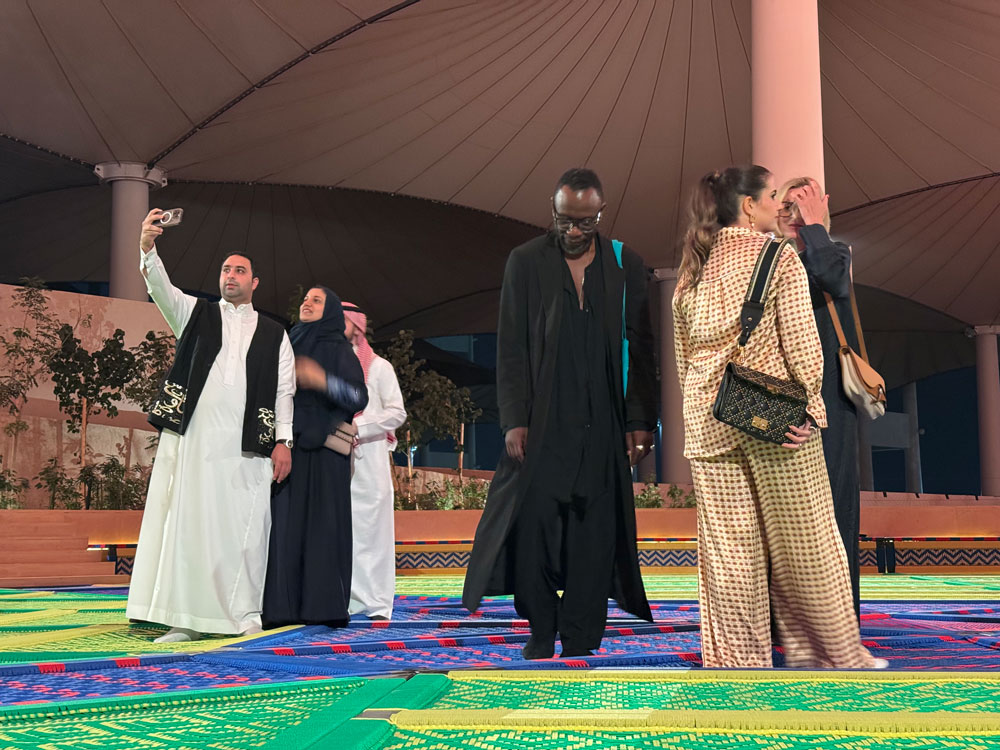MANAMA: The first thing we noticed on walking into Maki was the décor. It’s cool without being intimidating —brushed concrete floors and metal accessories. The second was that there was an impressive number of full tables for a Wednesday night — always a good sign.
We were led to a window table and, as if by magic, our server produced mini towelettes — the pre-compressed kind onto which she poured a little water and we watched them expand. Not rocket science, but an amusing touch to set the tone.
I thought it a little odd when she carefully unwrapped our chopsticks but her actions were soon explained when she returned moments later with the wrappers folded into origami shapes to form chopstick rests. I’m a sucker for personal touches and this small offering put a smile on my face.

Maki is located at Bahrain’s World Trade Center. (Supplied)
She was also extremely knowledgeable about the menu, no small task since the brothers who own the restaurant are constantly coming up with new items in a Japanese-fusion style.
Our first dish was the Chef Chopped Salad — tuna, salmon, avocado, iceberg lettuce, tobiko and crispy tempura with rocket, peanut wasabi and the Maki special salad dressing. Definitely big enough for two, this not only looked great but also presented a surprising flavor combination.
The crunchy texture of the tempura coupled with the unmistakable taste of the fish roe gave a distinctly Japanese feel, with the peanut wasabi providing sufficient kick to counteract any over-fishiness (if such a thing exists). Plenty of rocket and a slathering of the tangy, piquant house dressing satisfied a craving for greens.

The restaurant is not intimidating —brushed concrete floors and metal accessories. (Supplied)
Next up was one of the evening’s standout dishes, Tempura Prawn Tacos. Yep, there’s that fusion thing going on. Along with the prawns and tempura, the star of the dish was Japanese guacamole — it’s like regular guac, but with the addition of shiso leaf, ginger and wasabi paste. When tucked into a crisp, warm taco shell and topped with Maki’s signature sauce, it makes for a dish that’s really hard to beat. I certainly wouldn’t think of Japanese cuisine as comfort food, but this comes close to qualifying.
The Spicy Real Crab Sushi that followed was the second standout. Mixed with carrot, cucumber, spring onion and crispy tempura, the crab was deliciously fresh, sweet and melt-on-the-tongue tender, perfectly complemented by the sweet-and-spicy sauce and the rich tang of the nori. To be honest, I could quite happily have stopped at this point a very happy women.
However, in the interests of research, we had also ordered the Shakira Sashimi — slices of raw tuna served in a special citrus sauce topped with sesame and spring onion. My guest found the sauce a little overpowering and salty, but I was delighted to find such obviously fresh tuna with not even a tinge of fishy smell and a perfect mouth-pleasing texture.

Spicy Real Crab Sushi was mixed with carrot, cucumber, spring onion and crispy tempura. (Supplied)
Our last savory dish was the Athari Maki, which is perhaps best described as Mediterranean. The restaurant owners are Lebanese and one of them is crazy for the high-quality olives and olive oil produced on the family farm. This Maki is testament to that, with a specially created olive wrap replacing the usual nori. It’s super thin, emphatic in flavor and the perfect accompaniment to the other ingredients, which include salmon, filo prawn tempura and black truffle pearls. Together they present a flavor combination you won’t find anywhere else with the pearls bursting on your tongue in a wake-up call to the taste buds before the rest of the sensations hit.
We finished with an extremely photogenic dessert, the Kone-Afa Vanilla Ice Cream – another of Maki’s exclusive creations. I adore sweet vermicelli, from which the cone is made, so this was another standout for me, made even better by the addition of yuzu blossom syrup that gave the ice-cream filling a hint of the tropics and sat perfectly with the fresh raspberry sauce and pistachio-flake topping.























